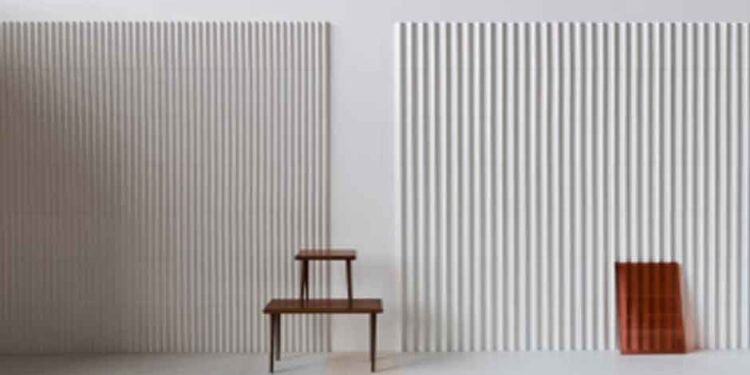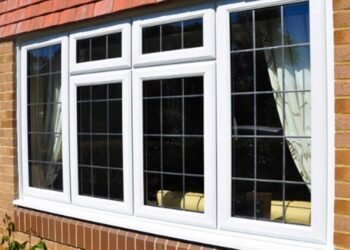Cost is often a major consideration when choosing the right material for your interior design project. WPC wall panels are becoming a popular choice as they are more popular due to their durability as well as their aesthetics.
For a long time now, traditional wood has been the material of choice for construction. That’s why many homeowners want to know the cost difference between the two. In the next article, we’ll take a closer look at is the WPC wall panel more expensive than wood.
WPC wall panels and wood
WPC paneling is a blend of wood fibers and plastic. This unique design protects the wall panels from extreme elements, moisture, and rot. It has excellent resistance to UV rays, so it will not fade over time.
It is a more cost-effective option compared to traditional wood. Due to its excellent performance, it will last longer and avoid tedious repairs and replacements.
Traditional wood has a natural and classic look, which is why many homeowners prefer it. However, with advances in technology, WPC panels are now able to mimic the grain and finish of wood very well. Traditional wood is cheaper to buy initially but requires a lot of maintenance and upkeep to ensure its durability.
Is the WPC wall panel more expensive than wood?
Considering the initial purchase cost of wall panels, wood is indeed cheaper than WPC wall panels. However, if you consider the maintenance costs between the two, then WPC paneling is more cost-effective.
Initial cost comparison
Natural wood is often considered to be the cheapest building material. Therefore for a long time, timber has been the preferred choice for construction projects. The cost of a typical traditional timber tends to be lower than that of WPC paneling for projects of the same size. However, the investment in WPC wall panels pays for itself as you use them over time.WPC paneling offers superior durability as well as longevity. The average cost will gradually decrease as you use it.
Traditional wood requires regular maintenance and upkeep, but WPC wall paneling does not require such tedious maintenance at all. This will also allow homeowners to save more on maintenance costs.
Long-term maintenance costs
While traditional wood wall paneling has a low initial cost, it is important to consider the long-term costs for costing purposes. Wood wall panels require regular maintenance and upkeep, such as painting, sealing, or staining. This can significantly increase your costs as you use it.
WPC wall panels are known for their low-maintenance nature; they don’t require tedious upkeep. All you need to do is clean the wall panels on a regular basis, which can effectively reduce overall maintenance costs.
Durability
Durability is also a factor to consider when comparing the cost between the two. WPC paneling can withstand all kinds of extreme stresses including moisture, climate change, and impact. It will not crack, break or rot easily, ensuring a longer-lasting life for the wall panels. This reduces the need for replacements and repairs to a certain extent, thus lowering the overall cost.
Wood wall paneling, on the other hand, is prone to cracking or rotting. Even if you perform regular care and maintenance, there is a high chance that the wall paneling will become damaged.
Maintenance needs
As we mentioned above, wood paneling requires regular maintenance and upkeep to ensure its appearance and structural integrity. The cost of maintenance includes the cost of sealing, sanding, and painting. The cost of the maintenance and upkeep you need on your wood panels will increase as you use them.
In contrast, WPC panels require little to no maintenance. So you can save even more costs and fees over time.
Installation costs
Installation costs for both vary depending on a variety of factors, such as labor costs, project planning, and specific installation requirements. Overall, however, WPC wall panels are easier to install. It is lightweight and easier to transport and install.
Most of the manufacturers have designed grooves as well as fixing systems for WPC panels, which can effectively reduce the installation time. As a result, the installation cost of WPC paneling is usually lower than wood paneling.
Environmental impact
The environmental impact of wall panels does not directly affect the cost of either, but it is a factor to be considered. Wood paneling can cause deforestation and depletion of natural resources. In contrast, WPC panels are made from recycled plastic and wood fiber, reducing the need for virgin materials.
While the environmental benefits do not directly impact the initial cost, they add long-term value to the overall cost of choosing WPC panels.
Freedom to customize options
Both WPC wall panels and wood wall panels offer homeowners a wealth of options and designs. However, some specialty designs or wood species can cause wood wall panels to be more expensive.
WPC panels are more versatile and come in a wide range of textures and finishes to choose from. WPC wall panels may be a more affordable option for some homeowners who don’t need a specialty wood species.












